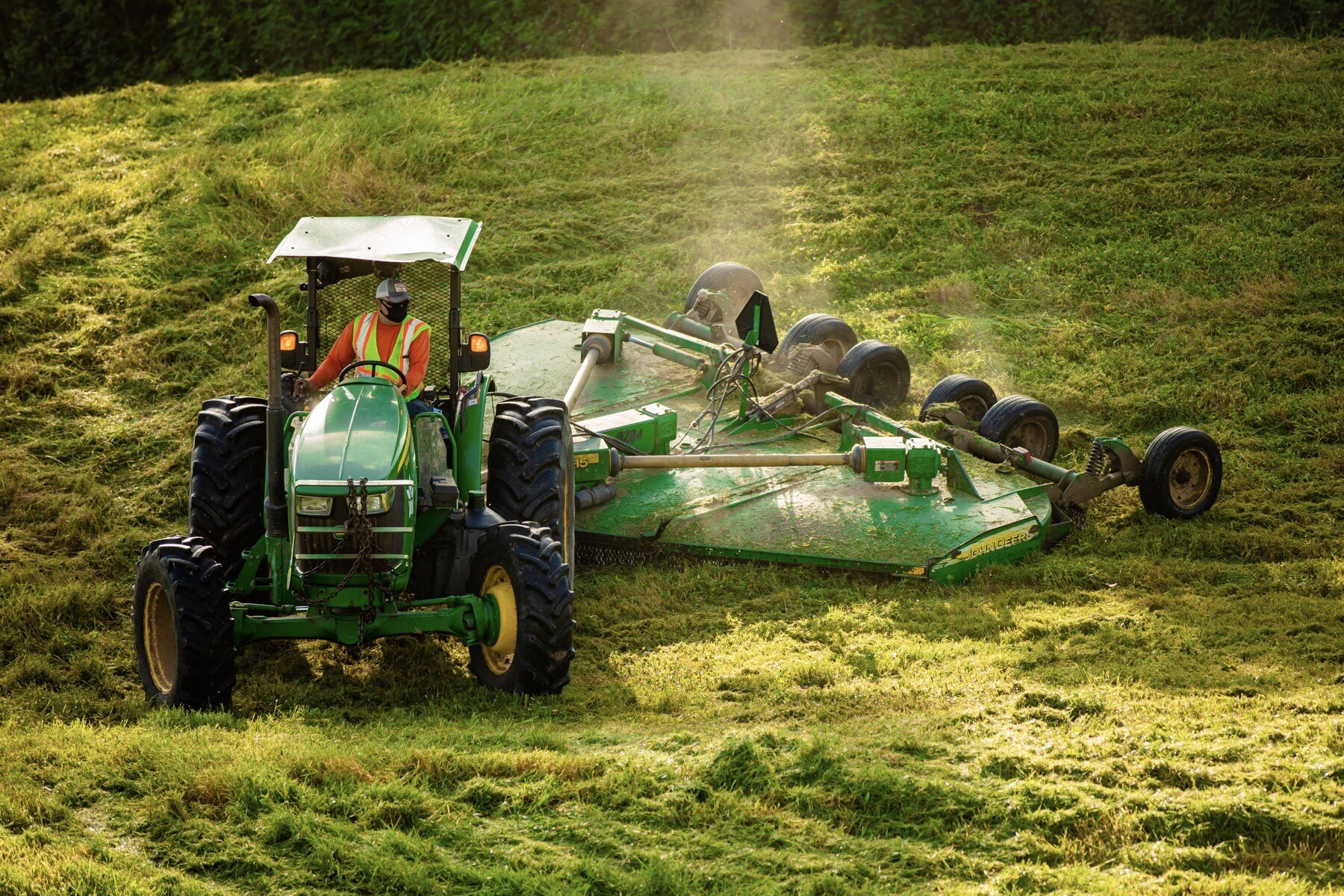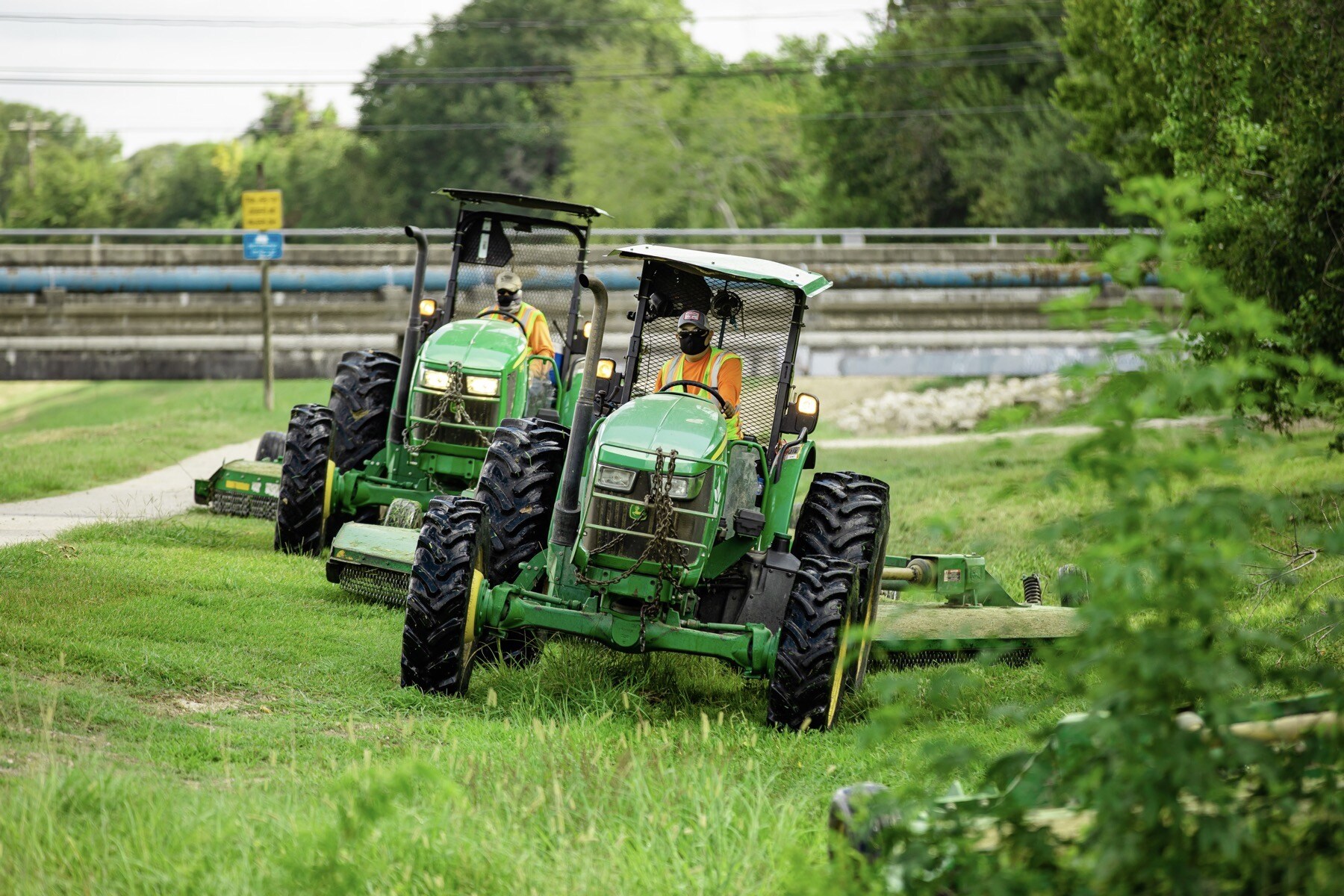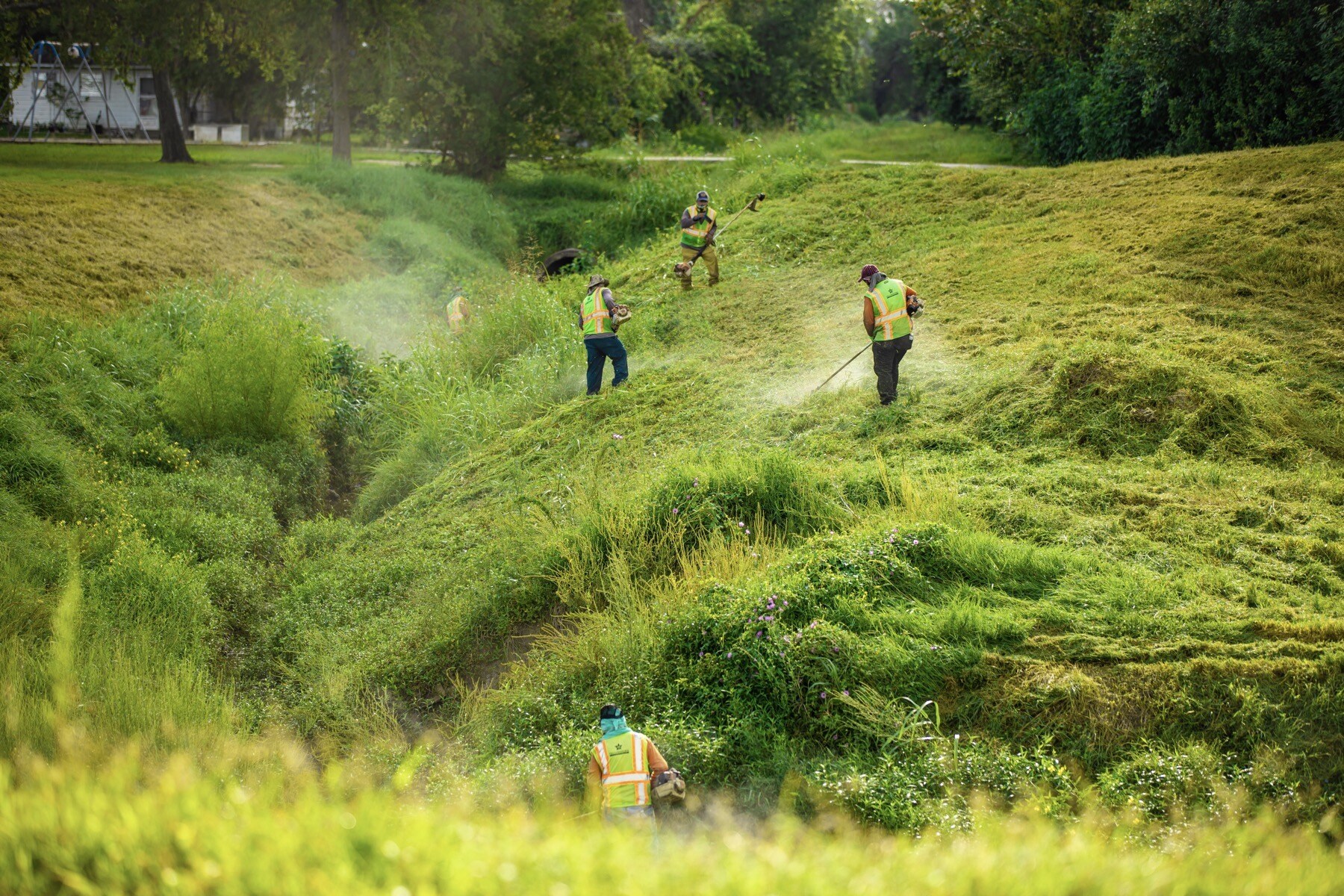There are vast areas of Houston, Texas, that stretch hundreds of miles and play a critical role in the city’s infrastructure. Hidden in plain sight, the functionality and importance of these pathways are invisible to 99% of the people living in the area. Many citizens may see these roadside aqueducts as just a part of the natural landscape but fail to understand the critically important job these channels perform for the city and its residents.
In this case study, we’ll give you a peek behind the curtain of what it takes to care for these essential components of the city’s infrastructure. They protect homes from stormwater flooding, but we’d like to share with you just what it takes to maintain these miles and miles of waterways and the imposing physical challenges to our employees tasked with maintaining them.
Challenges
We could list dozens of maintenance challenges in keeping up with this enormous amount of property. We’ll focus on just a few, though. To start with the most obvious, the sheer amount of land area is gigantic. Once our crews reach the end, which takes multiple weeks, it’s time to start over at the beginning. The endless workload requires expensive, heavy-duty tractors that must be maintained properly, to avoid downtime in the field.
It also takes physically fit and mentally tough workers able to handle miles and miles of mowing and string trimming day after day. Besides the hard work, the landscape maintenance crews face harsh weather conditions. Then there are safety hazards most people can’t imagine - mowing incredibly steep hills, venomous snakes, sharp metal objects hidden by tall grass, and other perils around every corner.
Finally, a huge challenge comes with cutting down hardy vegetation that’s tougher than average grasses. Thick vines and stalks can damage our equipment or slow progress to a crawl.

Results
At Yellowstone Landscape, we take pride in overcoming challenges on every property type for our clients. This case study highlights how extreme those challenges can sometimes be. The results below showcase the dedication and excellence of our workforce.
- Tractors fitted with flex-wing bush-hogging attachments handle the bulk of the mowing.
- These machines can cost nearly $80,000 each, so systematic maintenance protects our investment while keeping us on schedule.
- Yellowstone logistics specialists maximize scheduling efficiency as well.
- Our valuable H2B visa workers handle most of these types of maintenance jobs.
- Often, these workers have work experience that prepares them for harsh work environments like this Houston flood control district work involves.
- To ensure our workforce feels appreciated for jobs without any outside accolades, Yellowstone Landscape’s employee appreciation initiatives work wonders.
- Industry-leading safety protocols help avoid accidents and injuries in these hazardous areas.
- Yellowstone Landscape Safety Rodeos help prepare our crews for working near vehicles speeding down the highways next to their work areas.
- In-truck cameras help management monitor driving hazards that arise while crews are loading and unloading equipment from trucks.
- Personal protection equipment is provided to all our staff—in this case, we also equip them with waders and snake-bite-proof leggings.
- Spare machines and parts are kept on-site to overcome damage and downtime from hard-to-cut vegetation and hitting metal debris hidden in overgrown grass.
Project Notes
“Without functional landscaping in municipal areas, severe storms would leave worse flood damage behind.”
“Yellowstone team members’ work ethic in these brutal environments is astounding.”
“Landscape maintenance like this belongs on Mike Rowe’s Dirty Jobs.”
An Invisible Public Good
At Yellowstone Landscape, we like nothing better than sharing success stories that blow people away with world-class landscaping features. However, we take pride in doing public good that mostly goes unseen and unheralded. Without proper mowing and string trimming, Houston’s aqueducts could not properly protect roadways, vehicles, and nearby homes from flooding when heavy rainfall or hurricanes hit the city.
And while maintaining these often overgrown areas just four times a year isn’t about producing something as aesthetically pleasing as other types of projects we work on, we take great pride in the fact that it serves a vital public function. Left unattended, these areas would become havens for even more dangerous wildlife, fill with trash and natural waste, and flood waters would back up and overflow the banks, flooding homes and businesses.
Our workforce can handle dealing with harsh environmental elements like those. They proudly stand between the damaging results of unmaintained outdoor areas and the public. Functionality is the focus here. Not beautification or landscaping accolades. The reward comes in knowing our company’s work makes a positive difference in the lives of people who call Houston home.
If you have a massive landscape maintenance project that others are hesitant to bid on, contact Yellowstone Landscape for a consultation.






